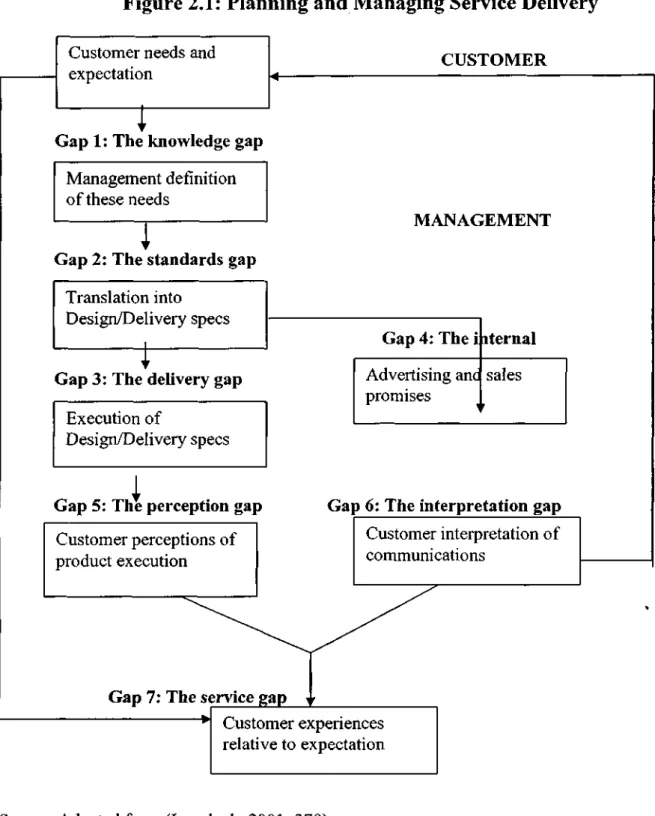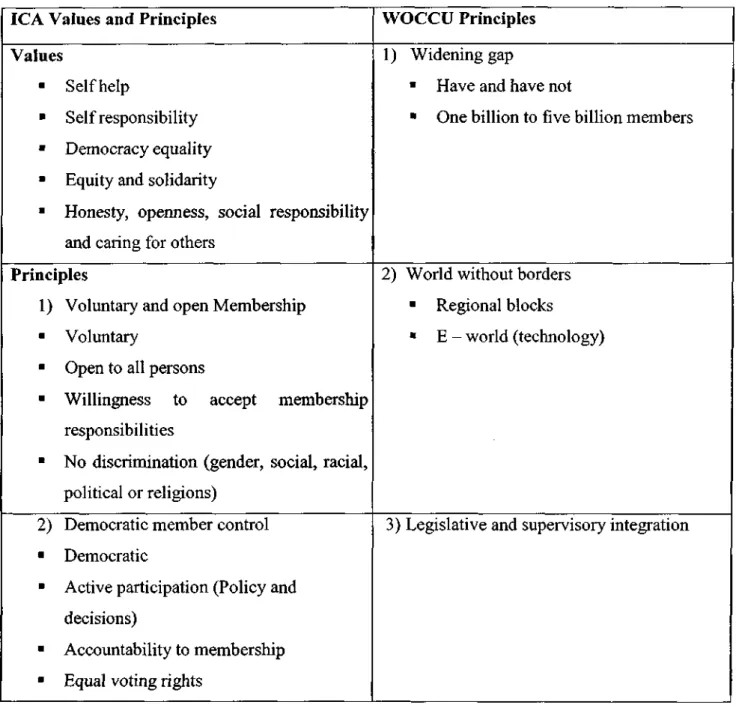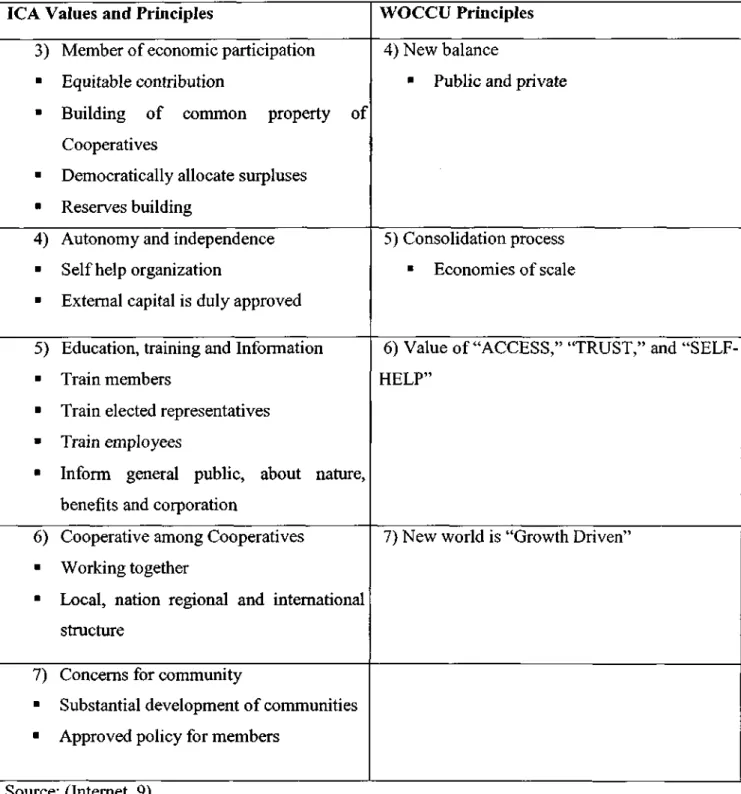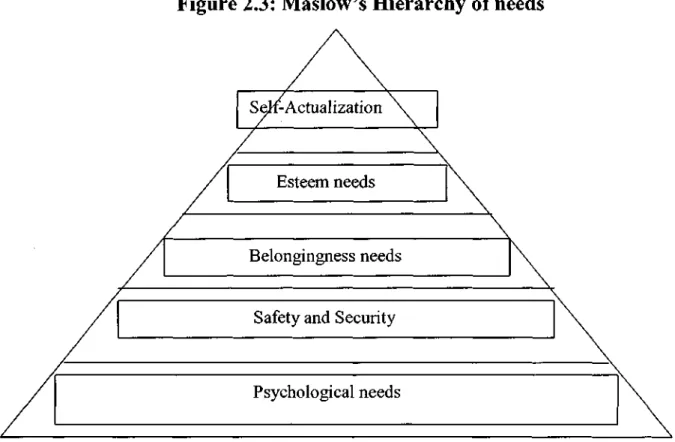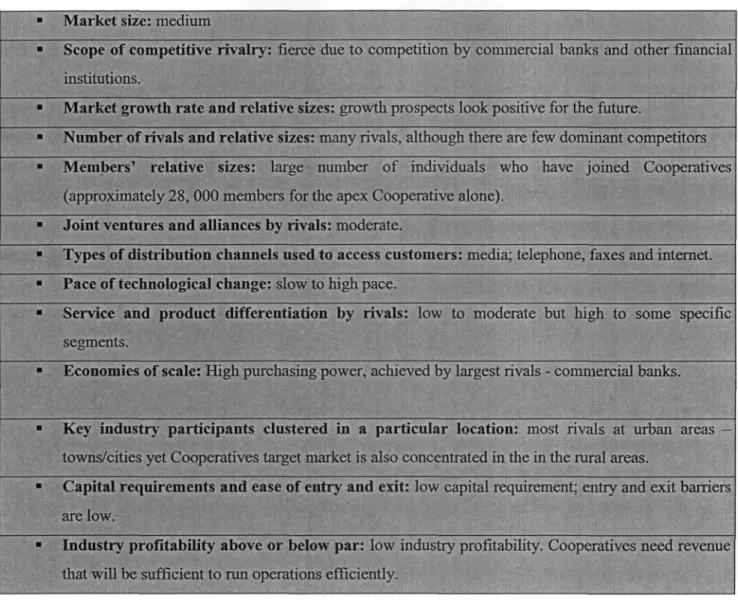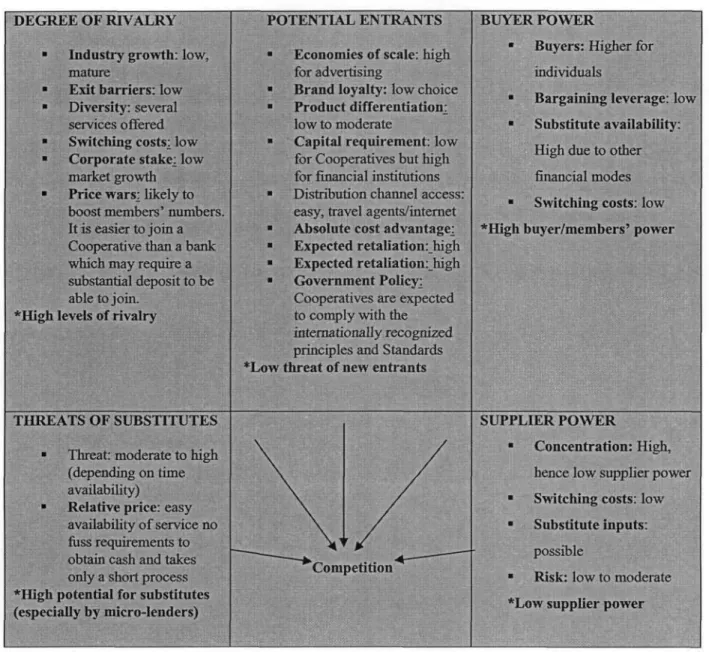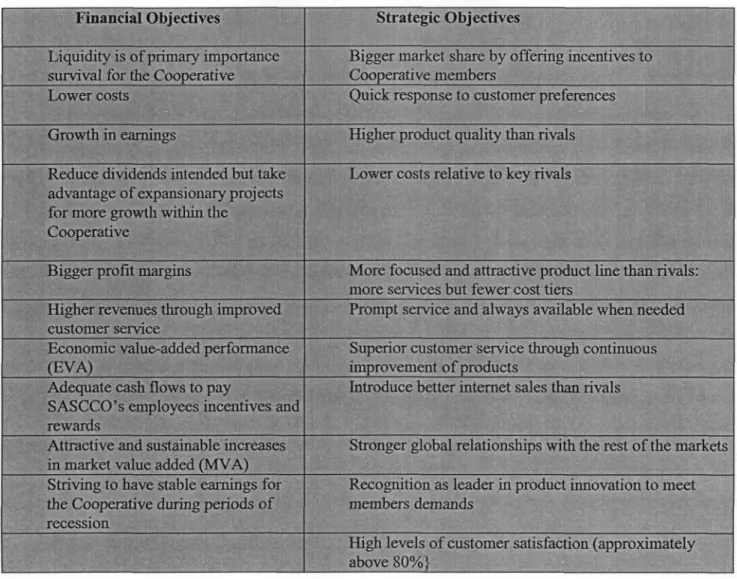This one is special to David Sibandze - Treasurer for SASCCO, all Co-op stuff - you were amazing. It is envisaged that the research undertaken will be used to compare the current strategy of the cooperative (reorganization) and to help identify the factors that will lead to a successful reorganization.
Chapter Five
LIST OF TABLES
List of acronyms
DEFINITION OF TERMS
DEFINITION OF TERMS (cont)
CHAPTER ONE
- Introduction
- Background of the Research
- Strategic Management
- Reorganization Strategy
- Suitability
- Gap Analysis
- SWOT Analysis
- Implementing and Executing Strategy
- Formation of Cooperatives
- Types of Cooperatives
- M a n a g e m e n t of Cooperatives The following factors were looked at in detail
- Cooperatives Principles, Practices and Policies
- Strategies for Cooperatives
- Differences between Cooperatives a n d other Businesses
- Advantages of Cooperatives
- Disadvantages of Cooperatives
- Cooperative Profile
- Motivation for the Research
- Value of the Project
- Problem Statement
- Management Dilemma
- M a n a g e m e n t Question
- Research Topic
- Objectives of the Study
- Research Design and Methodology
- Data Collection Design
- Primary Data
- Secondary Data
- Ethical Requirements
- Design Strategy
- Limitations of the Project
- Structure of the Study
- Chapter Two
- Chapter Three
- Chapter F o u r
- Chapter Five
- Summary
Drafting a job specification for the Investment Manager and the Managing Director of the Co-operative Bank. A conclusion about the suitability of the Co-operative's strategy is made, and the gaps/deviations and deviations found in the strategy are also discussed.
CHAPTER TWO
Introduction
Strategic Management
- Strategic fit
- Grand strategies
- Core Competences
He further argues that companies that analyze their core competencies can see beyond their end products and as a result can compete successfully in a rapidly growing and competitive global economy. Core competencies are a strong wall against competitors who may want to imitate the company's products and services.
Reorganization Strategy
- Going Concern Evaluation
- Asset Protection
- Asset reduction
- Outsourcing
Asset protection should not be intended as a means to hide or conceal assets from legitimate creditors. The overall goal of asset protection planning is to legally structure assets so that the assets cannot be reached by lawsuits and/or general creditors.
Suitability
- Establishing the rationale
- Life Cycle Analysis
- Business Profile Analysis
- Screening Options
- Industry Attractiveness
- External Analysis
- Porter's Five Forces
- Strategic Group Maps
- Weighted Competitive Strengths model
- Internal Analysis
- Value chain analysis
Life cycle analysis determines whether a strategy is likely to be appropriate given the stage of the product life cycle. The service gap: the difference between what customers expect to receive and their perceptions of the service that is actually provided.
The knowledge gap Management definition
The standards gap 1
The delivery gap Execution of
The service gap
The i iternal Advertising anc
The interpretation gap Customer interpretation of
- Positioning
- Portfolio Analysis
- The Boston Consulting Group (BCG) Matrix
- Optimal Capital Structuring
- Gap Analysis
- Product and Market Gap Analysis Model
- Product Line Gaps
- SWOT Analysis
- Implementing and executing a strategy
- Cooperatives
- Formation of Cooperatives
- Types of Cooperatives
- Cooperatives Principles and Practices
- Strategic M a n a g e m e n t for Cooperatives
- Management of Cooperatives
- Organizational Structure
- Principles of Management
- Leadership
- Organizational Change
Weaknesses in the organization's human resources will permeate many of the other issues already discussed. The pressure to reformulate may be caused by changes in the environment, technology, political climate or management, or by continued growth in the organization. The prerequisite is that every employee in the organization has at least a basic understanding of the cooperative's value chain.
The specific circumstances of the organization must be taken into account when deciding on an ideal structure (ACCA Newsletter July, 2001).
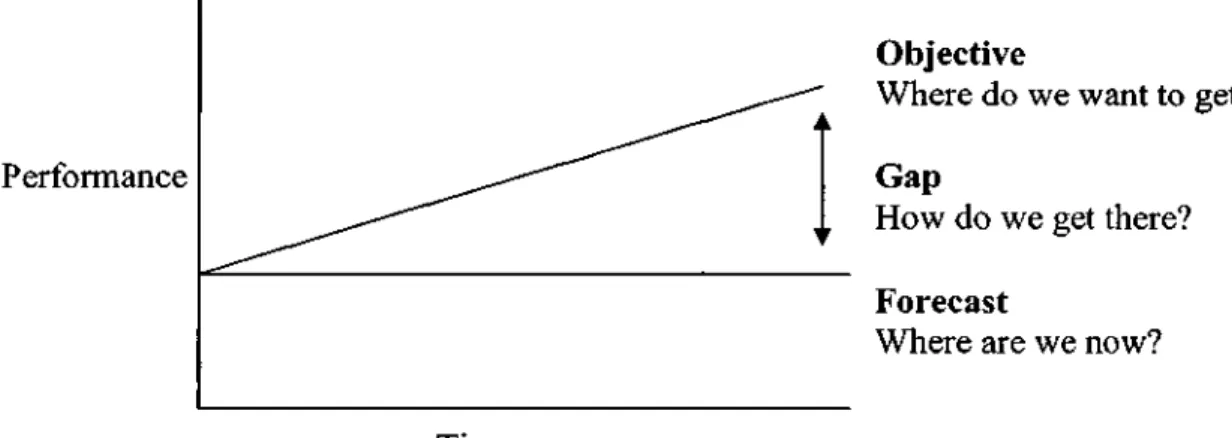
Analyze Competitive Position
Determine the type of change needed This stage helps identify the required change
Identify Desired Future State
Balogan and Hailey (1999), Newston and Davis (1997) define the learning curve as the adjustment period that follows change and typically means that there will be a temporary drop in efficiency before a group reaches equilibrium. It is therefore very important that there is a match between the chosen change approach and the design of the transition phase.
Analyze the change context
Identify the critical change features
Determine the Design Choices
Design the transition process levers and mechanisms
Manage the Transition
Evaluate change outcomes
- Preparing for organizational change
- Breakdown at the top
- Changing Scope
- Scale
- Everything Changes
- M a n a g e m e n t changes
- Total Quality Management (TQM)
- Quality Strategy
- E n h a n c i n g Value by I m p r o v i n g Quality and Productivity
- Identifying and Correcting Service Quality Shortfalls
- Identifying Failure Points
- Bankruptcy Prediction Models
- Solvency Prediction Ratios
- Corporate recovery
- Improved financial control
- Working Capital Management
- Review of Entire Internal Controls
- Differences between Cooperatives and Other Businesses
- A d v a n t a g e s for Cooperatives
- Disadvantages for Cooperatives
- Strategy Suitability Model for Case Analysis
- Summary
- Introduction
- Macroeconomic Environment (PESTL)
- Interest Rates and Inflation
- Taxation
- Capital Markets
- Politics
- Technology
- Industry Analysis (External Environment)
- The Product Development and Life Cycle
- Porter's Five Forces
- Company Analysis
- Formation of the Cooperative ( S A S C C O )
- T h e Cooperative's Principles and Practices
- Type of Cooperative
- SASCCO's Policy
- SASCCO's By-laws (Summarized)
- SASCCO's View in Forming a Cooperative Bank
- SASCCO's Strategic and Financial Management Profile
- Management of the Cooperative
- Cooperative Structure
Total Quality Management (TQM) is seen by Pycraft et al (2000) as an extension of the traditional approach to quality. 34;There is no doubt that the cooperative concept is slowly but surely cementing itself in the consciousness of the Swazi people" (SASCCO Newsletter, April 2003). There is also little or no control of the cooperative industry by the relevant authorities .
In figure 3.1 the structure of a typical credit union is adapted according to ICA standards and guidelines (Internet, 4).
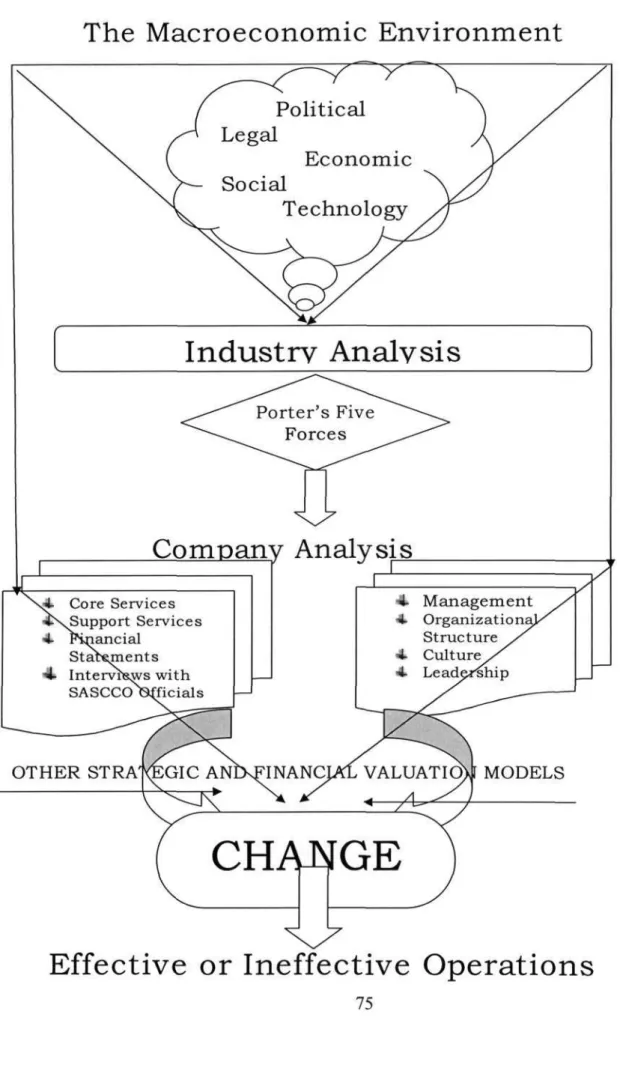
Leadership
What matters is matching the style of leadership to the internal and external context of the organization. He focuses on the long-term part of the Cooperative by collaborating with other global and local cooperatives. SASCCO has formed strategic alliances with other organizations to ensure the long-term profitability of the Cooperative.
The CEO believes that for the satisfaction of shareholders and other customers, SASCCO must be successful in its business, and to realize the vision of the cooperative, it is necessary to redefine the strategy and create a think tank for the members of the cooperative.
Culture
Both the CEO (Bongani Masuku) and his deputy (Winile Dlamini) believe that the customer is a priority and should receive quality service. He has a very good reputation and has proven to be a manager who succeeds against all odds. He supports everything SASCCO stands for and uses public relations as one of his tools to raise awareness of the organization through live presentations on national broadcast services.
His good negotiating skills have secured an E loan from the South African Development Bank (SADB) when local banks were unwilling to help, which also shows that he has a strong foundation in finance and that he is not a short-sighted leader.
SASCCO's Value Chain Activities
- Core Activities
- Representational Role
- Risk Management Programme (RMP)
- The Central Finance Facility (CFF)
- Education and Training
- Technical Assistance and Advisory Services Provision
- Other Services offered by the Cooperative
- Support Services
- Finance
- Marketing
- Human and Resource Management (HR)
- Information and Technology (IT)
- Financial Statements
CFF is an extension of the cooperative principle of pooling funds for mutual aid benefits. The Computer Division, for example, is tasked with launching new services that are performed for the benefit of societies. Additional funds may be used to purchase furniture and install air conditioning that were not part of the total project cost.
The Final Accounts Information on audited accounts and unaudited accounts is included for later review and evaluation of the cooperative in Chapter Four.
LIBRAE
The cooperative should improve its leverage and commission receivables from the risk management program and sale of stationery to Saccos. The cooperative must continuously evaluate itself to ensure the accuracy of short- and long-term goals. Place senior employees (executives) on contract employment. 11) Does the cooperative have a market research department or plan.
The decisions of the cooperative are diverse as it is the supreme body composed of various Saccos.
Change Management
The completion of the SASCCO Center will improve the organization's revenues, which should result in good dividends for members. It seems that the employees were not given a chance to contribute to the goals set for the change. As a result, the means to achieve the goals and the entire process are not sufficiently collaborative because not all employees are involved.
In terms of achieving the vision of the Cooperative and the ability to change, the Cooperative can be sustained by aggressive measures in the reorganization strategy and by changing management methods, expanding the operational base and taking reasonable risks.
Summary
Introduction
Strategy Suitability Model for Case Analysis
Suitability of the Current Strategy
- M a c r o environment
- Taxation
- Capital markets
- Politics
- Technology
- Industry Evaluation (External Environment)
- Porter's Five Forces Model
- Strategic Group Maps
- Weighted Competitive Strength Assessment
- Company Analysis (Internal Evaluation)
- Value Chain
- Positioning
- Financial Analysis for S A S C C O
- Tax implications
- Dividend Policy
- Du Pont Analysis
- Income and Expenditure 2002
- Balance Sheet 2002
- Liquidity Assessment
- Proposed Budget for 2004
- Optimal Capital Structure
- Equity and Gearing Effect
- Cost of capital, CAPM and WACC
- Bankruptcy Prediction
- Solvency Evaluation Ratio 2002
- G a p Analysis
- S W O T Analysis
- Management of the Cooperative
- Main Advantages for the Cooperative
- Main Disadvantages for the Cooperative
These are also considered a core service of the cooperative, as stated in the cooperative's articles of association. The cooperative can accommodate a large proportion of the country's working-class employees. Compared to other key players in the industry, the cooperative still lags behind in research and development and technology.
Most members of the Cooperative are aware of the organization's activities and how the organization functions.
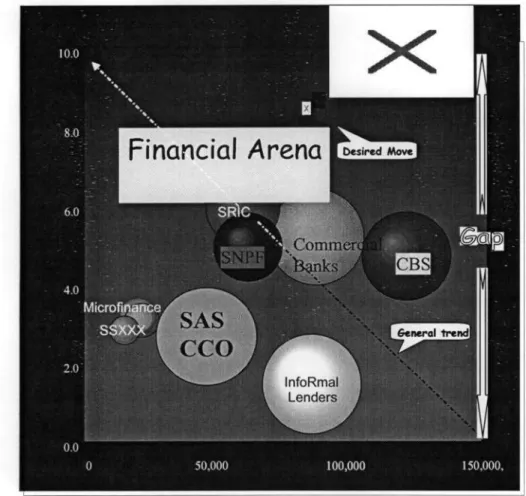
Change and Corporate Recovery
Undervalued customer segments in the rural areas are also targeted by the Cooperative, but they must belong to a Sacco. It is currently not clear whether these changes will be successful in improving the Co-operative's profitability, but the changes are contextually correct and informative. New, open working policies and processes were introduced in the Co-operative and old ones were changed to promote the idea of change for the better.
The cooperative did not take aggressive measures to prepare employees for this major transition period.
Summary
Pipeline programs include restructuring the cooperative's products, evaluating staff performance, and hiring senior staff on contract to reduce costs in the form of full-time employment benefits such as long service or gratuities. The cooperative has a management advantage: the CEO is a visionary and has insight into the long-term aspect of the organization. The cooperative's main problem appeared to be its low leverage, which is currently hampering the cooperative's operations and its inefficiency.
Both current and acid test ratios show that the cooperative is liquid enough to meet its short-term obligations.
Introduction
Recommendations
- Suitability of SASCCO's Reorganization's Strategy
- Performance Gap Analysis
- A Successful Strategy Execution
- Reorganization Strategy
- Strategy Linked to Leadership
This will also improve the profitability of the Cooperative and a good reward system will increase the morale of the employees, i.e. the efficiency in the Cooperative. Improving the Cooperative's resource strengths and organizational capabilities can be benefited by adhering to the Cooperative's principles of charging low interest to members. This will help the Cooperative better strategize for the future by knowing which strategies work for the organization.
More members will join the Cooperative and therefore this will improve the current financial crisis.
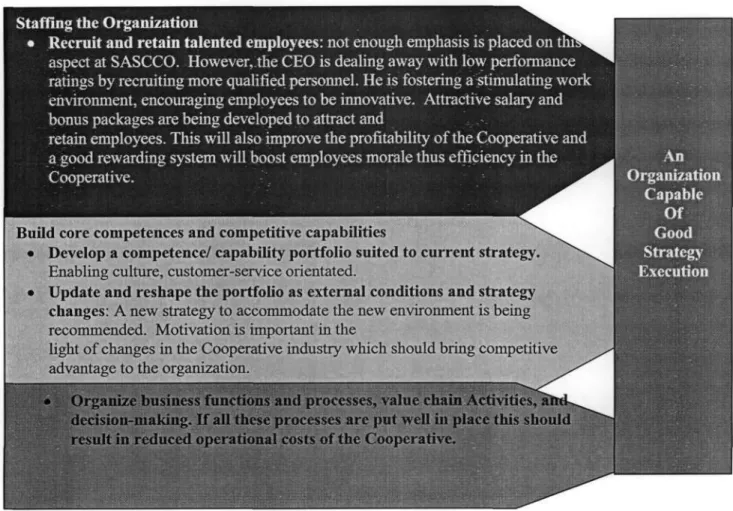
Management of the Cooperative
Such a reformed management should lead the cooperative on the right path without having to invest a lot of expensive resources, and should be able to set a clear direction for all stakeholders and maintain open and constant communication about any changes in processes. A successful leader should not be afraid of making mistakes, but should be ready and willing to make every mistake a learning path.
Total Quality Management (TQM)
For example, the financial manager is often over-involved in many activities, which can ultimately make her less effective.
Value Chain Analysis
- Financial Control (Budget)
- Costs Reduction
- Control of Expenditure
- Sundry Expenses
- Board Sitting Allowances
- Optimal Capital Structure
- Gearing the Cooperative
- Future Equity
- Mid-Term Financing
- Portfolio Diversification
- Conducting both External and Internal Audits
- Pension Fund and Medical Aid Scheme
- Expansion Projects Encouraged
- Taxation
- Credit Control Facilities
- Counselling Programme for Indebted Customers
- Research and Development
- H u m a n and Resource M a n a g e m e n t
- Up-to-date Technology
Based on SASCCO's assessment results, a recommended average level of debt as part of the Cooperative's capital structure would be around 60%. The cooperative must ensure that future debt maturities are far enough apart to allow for recovery periods. It is recommended that after the Cooperative has recovered from the deficit and begins to be.
The proposed work structure for Andelsbanken should aim to work hand in hand with the individual associations.
Explicit commitment to value
- Value Based Management Methods (VBM)
- Economic Value Added (EVA)
- Market Value Added (MVA)
As SASCCO is involved in more expansive programs, it is necessary that a strategic planner be recruited to help facilitate effective planning and implementation of the programs within the cooperative. It is recommended that the cooperative consider techniques such as the economic value added (EVA). Furthermore, management performance based on the ability to add value to the company will also be examined with this technique.
This technique focuses on the long-term sustainability of the cooperative and is recommended to be used appropriately to improve the deficit of the cooperative.
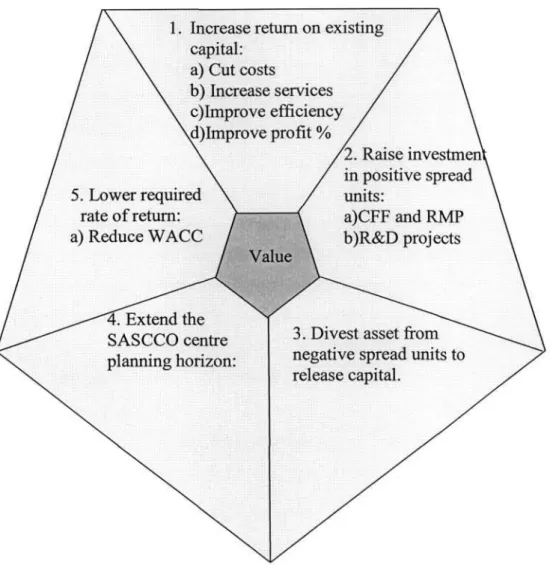
Conclusion
The results obtained from the SWOT analysis revealed that the cooperative has more internal weaknesses than external threats. The cooperative's technology was found to be substandard compared to that of competitors in the industry. The results show that the cooperative's balance sheet is very weak, but the deficit can be reduced (albeit at a very slow pace), for.
In turn, as compensation to investors, the Cooperative must be prepared to reward the members with higher returns than before.
- BIBLIOGRAPHY
- BIBLIOGRAPHY (CONT)
- INTERNET WEBSITES
- INTERNET WEBSITES (CONT.)
- REPORTS, MINUTES AND JOURNALS
Nagano Prefectural Federation of Small Business Enterprise Association (NPFSBEA), available at: http://www.alps.or.ip/chuokai/english/coops02.html. Organizing and Operating Agricultural Cooperatives, available at: http://eesc.orst.edu/agcomwebfile/edmat/EM8665.pdf. 2004 Budget Speech by Swaziland's Minister of Economic Planning, Majozi Sthole, available at: www.sptc.co.sz.
